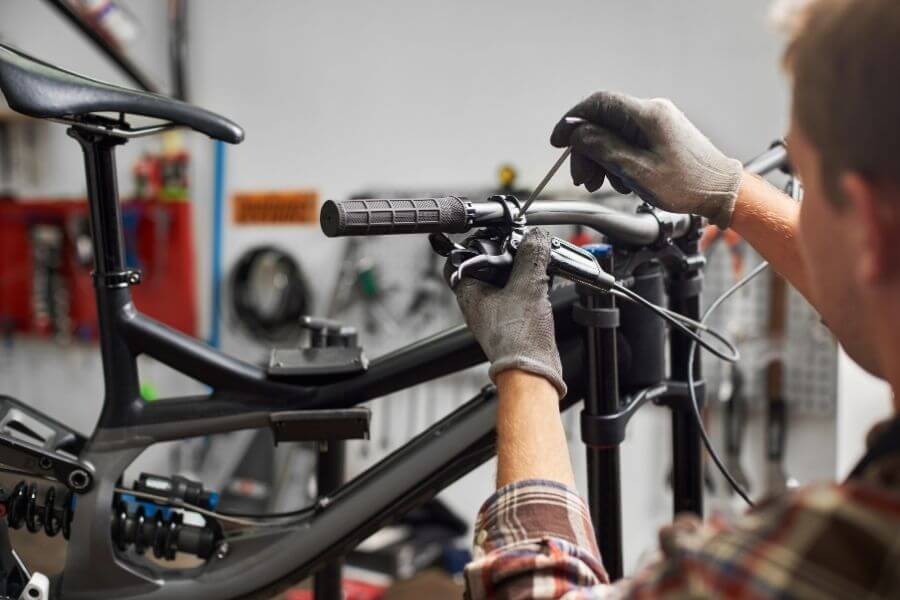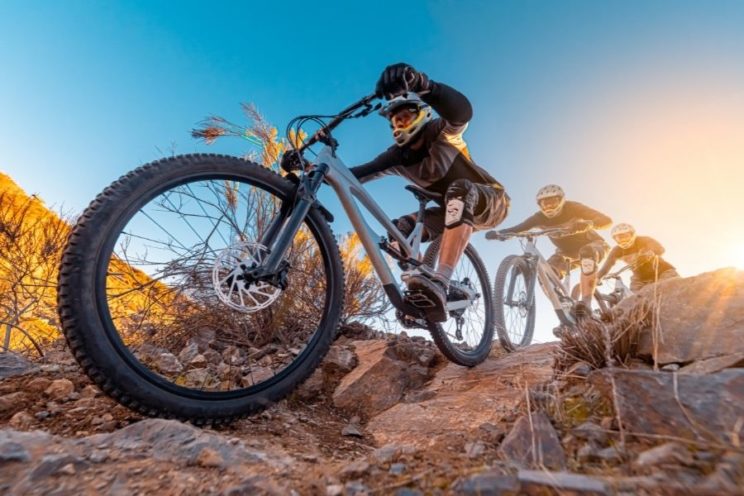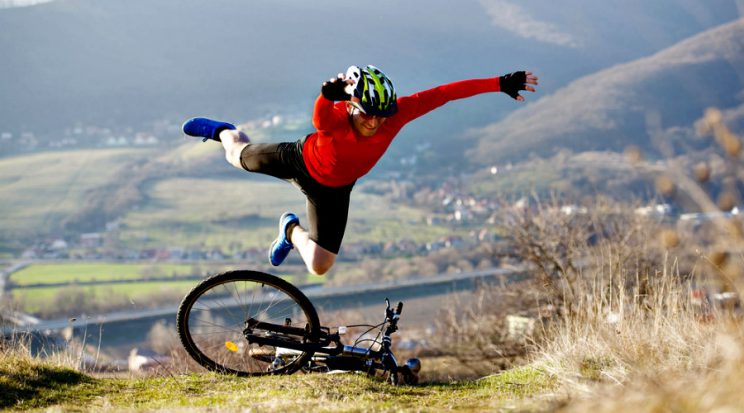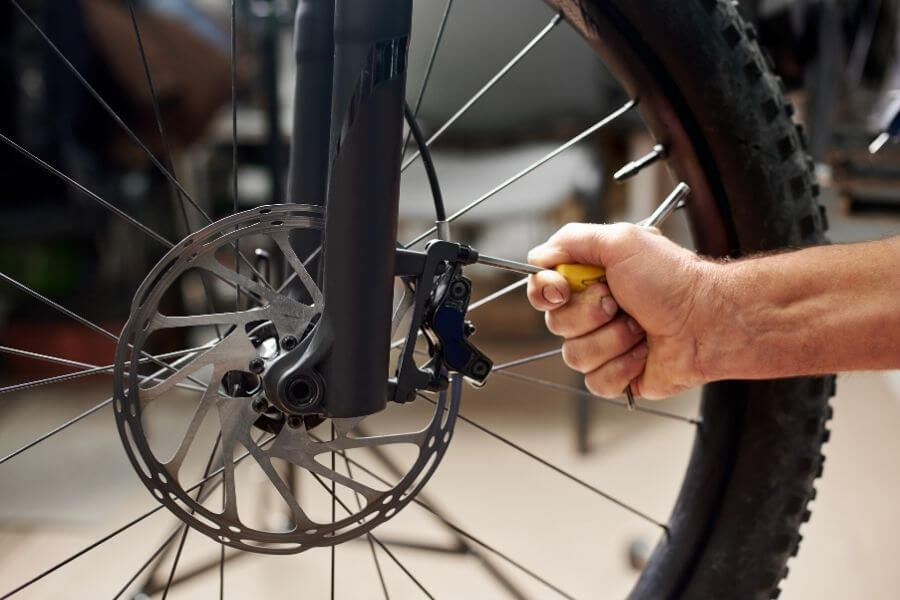In it
Mountain Bike The brakes are, possibly, of the three most important components of the bicycle, next to covers and transmission. It is no accident that the most relevant technological advances in brakes were first tried on mountain bicycles, such as disc brakes. Innovations that have ended up extending to other cycling modalities, such as the road or the cyclocross.
Investment in good brakes is one of the first tips that we can give you in this regard. If you have to spare in spending, it is preferable to do so in other types of less crucial components for bicycle management or your safety (wheel material, peripherals, accessories, etc). Because having a reliable braking system already improves in itself the behavior of the bicycle. And if you know how to use with ease and head, much better.
But it is not only about having adequate brakes, but also - and especially - to know how to use them correctly. When is it necessary to stop thoroughly? How should you face the braking on a descent? How should the front brake be used? Doming the braking technique in mountain cycling will help you take advantage on the most demanding paths, improving your results and performance. In addition, you will avoid a good number of scares, mishaps or falls.
How to adjust and drive brake handles

Before advising you on braking technique, it is important that the handles are well placed with respect to the handlebar. As a general rule, it is recommended to bow them below the handlebar, allowing the forearm, doll, hand and fingers to be stretched in a straight line.
In addition, you have to adjust the scope of the handle. That is, the distance between the lever and the fist. Many of the current mid -range brakes already have a quick adjustment wheel to regulate it. If not, they have a nut to move it forward or back.
Finally, make sure that the handle anchor position is adequate to allow the brake to be operated without forcing fingers or wrist. In
This bike only article You can see more in detail what this handle adjustment in three steps is.
Rear handle
A good position adjustment and inclination of the handle will allow the brake with more strength and precision, modulating the power based on the needs of the land. The rear brake will be the guide, which regulates the speed and controls the movement of the bicycle.
The rear brake serves to control the bicycle, not to determine it
It is the brake that should be used more, always in a controlled and not abrupt way, to avoid skiding. The rear brake is essential to control the curves and reduce speed before the entrance into them, in obstacles or jumps. It is the control brake, not the one that stops the bicycle.
Front handle
The front brake is less progressive, more abrupt and generally has a more power point than the rear. He is in charge of stopping the bicycle and acts more as a definitive brake or security brake. He is also the only one capable of counteracting the inertia of the bike, especially if they are strong.
Therefore, if action, we recommend doing it smoothly and progressively, never strongly or abruptly, to prevent the front wheel from suddenly blocked and your body, with that of the rest of the bike, jump over the blocked wheel And you suffer a devices, or the wheel itself is overflowed if the terrain is slippery or muddy.
The front brake must always press it smoothly and from less to more
Another of the most frequent situations of the use of the front brake is to control the strong inertia in the descents and prevent the bike from getting out of control and getting out of the path or even the path.
What situations should you not stop?
[Captation Id = "Attachment_7540" Align = "Alignnone" Width = "744"]

Image: Michaelsvoboda / Getty images.[/caption]
As a general advice, we recommend that you do not abuse the brake. The
Current mountain bicycles They have a design and geometry destined to control the strong inertia of it with the movement and cyclist's management.
Normally, before a pronounced or cut drop it is best to use the brake before the arrival on the complicated section, release it and drop the bike without stopping. The bicycle will do its work, like the tires of the tires, to get out of the difficulty in a controlled way.
Other frequent situations in which not to use the brakes of your mountain bike are the following:
Inside a curve
You have to stop before entering. Only in the event that you feel that you have deviated from the trace you will act the rear brake. If that is not enough, squeezed but without passing the front brake, but only in exceptional cases. Before stopping, it is more important to move or tilt the body to guide the bike by the right path.
In obstacles or rocks
Given the passage through roots, stones, rocks, undercuts or other similar obstacles, the braking should always be done before, pressing the rear brake to adapt the speed to the passage of the obstacle. Never frenzy in the middle of the obstacle. The terrain is irregular, unstable and could make both wheels, uncontrollating the bike and losing balance.
In steps through rivers or puddles
It is common to see
Bikers Cortados in the middle of a puddle or stream for not having known how well or stopped in the middle of the water. Nor should we stop at the riverbed. The best, as in the previous points, is to moderate the speed slightly and pass it without lesseing too much, pedaling gently and determined.
In sand banks
A sudden braking in the middle of a sand bank can have two consequences: to be nailed and stunned or slide some of the wheels, lose control and even fall. That is why it is better to stop moderately before the section, without standing, firmly grab the handlebars and guide the bicycle on the side where there is less concentration of sand, forming an groove that allows you to overcome it quickly and without imbalances.
Main risks to stop bad

Behind a bad braking is 80% of the falls in the
Mountain Bike. Reaching a very past curve of braking, stopping in the middle of rocks, obstacles or similar, or tightening the front brake are very common causes of falls, which in some cases can be serious.
In addition to the falls, a very intense and sometimes unnecessary use of the brakes accelerates the wear of the tires and mismatch the brake tension faster. In the case of discs, they can get to warm too much, losing mordant if not the refrigeras, at the same time as the braking track of the pills is spent more quickly.
The importance of good maintenance

To always obtain the best performance of your brakes and do not fail you in the most critical moments you must, at least, a visual review of its most important parts every month. Handles, cables and covers, pills and the state of the discs are the points to be examined in the review.
In addition, if you notice loss of power, especially when losing tact of the handle, it is possible that the brake cable is not tensioned correctly in the case of mechanical brakes or a substitution of brake fluid, for hydraulic systems, for hydraulic systems. This purge must be done, at least, once a year, or before if a more radical MTB is practiced such as trail or enduro.
It's important to know
How and when to review your bicycle brakes To avoid scares and falls.
 Before advising you on braking technique, it is important that the handles are well placed with respect to the handlebar. As a general rule, it is recommended to bow them below the handlebar, allowing the forearm, doll, hand and fingers to be stretched in a straight line.
In addition, you have to adjust the scope of the handle. That is, the distance between the lever and the fist. Many of the current mid -range brakes already have a quick adjustment wheel to regulate it. If not, they have a nut to move it forward or back.
Finally, make sure that the handle anchor position is adequate to allow the brake to be operated without forcing fingers or wrist. In This bike only article You can see more in detail what this handle adjustment in three steps is.
Before advising you on braking technique, it is important that the handles are well placed with respect to the handlebar. As a general rule, it is recommended to bow them below the handlebar, allowing the forearm, doll, hand and fingers to be stretched in a straight line.
In addition, you have to adjust the scope of the handle. That is, the distance between the lever and the fist. Many of the current mid -range brakes already have a quick adjustment wheel to regulate it. If not, they have a nut to move it forward or back.
Finally, make sure that the handle anchor position is adequate to allow the brake to be operated without forcing fingers or wrist. In This bike only article You can see more in detail what this handle adjustment in three steps is.
 Image: Michaelsvoboda / Getty images.[/caption]
As a general advice, we recommend that you do not abuse the brake. The Current mountain bicycles They have a design and geometry destined to control the strong inertia of it with the movement and cyclist's management.
Normally, before a pronounced or cut drop it is best to use the brake before the arrival on the complicated section, release it and drop the bike without stopping. The bicycle will do its work, like the tires of the tires, to get out of the difficulty in a controlled way.
Other frequent situations in which not to use the brakes of your mountain bike are the following:
Image: Michaelsvoboda / Getty images.[/caption]
As a general advice, we recommend that you do not abuse the brake. The Current mountain bicycles They have a design and geometry destined to control the strong inertia of it with the movement and cyclist's management.
Normally, before a pronounced or cut drop it is best to use the brake before the arrival on the complicated section, release it and drop the bike without stopping. The bicycle will do its work, like the tires of the tires, to get out of the difficulty in a controlled way.
Other frequent situations in which not to use the brakes of your mountain bike are the following:
 Behind a bad braking is 80% of the falls in the Mountain Bike. Reaching a very past curve of braking, stopping in the middle of rocks, obstacles or similar, or tightening the front brake are very common causes of falls, which in some cases can be serious.
In addition to the falls, a very intense and sometimes unnecessary use of the brakes accelerates the wear of the tires and mismatch the brake tension faster. In the case of discs, they can get to warm too much, losing mordant if not the refrigeras, at the same time as the braking track of the pills is spent more quickly.
Behind a bad braking is 80% of the falls in the Mountain Bike. Reaching a very past curve of braking, stopping in the middle of rocks, obstacles or similar, or tightening the front brake are very common causes of falls, which in some cases can be serious.
In addition to the falls, a very intense and sometimes unnecessary use of the brakes accelerates the wear of the tires and mismatch the brake tension faster. In the case of discs, they can get to warm too much, losing mordant if not the refrigeras, at the same time as the braking track of the pills is spent more quickly.
 To always obtain the best performance of your brakes and do not fail you in the most critical moments you must, at least, a visual review of its most important parts every month. Handles, cables and covers, pills and the state of the discs are the points to be examined in the review.
In addition, if you notice loss of power, especially when losing tact of the handle, it is possible that the brake cable is not tensioned correctly in the case of mechanical brakes or a substitution of brake fluid, for hydraulic systems, for hydraulic systems. This purge must be done, at least, once a year, or before if a more radical MTB is practiced such as trail or enduro.
It's important to know How and when to review your bicycle brakes To avoid scares and falls.
To always obtain the best performance of your brakes and do not fail you in the most critical moments you must, at least, a visual review of its most important parts every month. Handles, cables and covers, pills and the state of the discs are the points to be examined in the review.
In addition, if you notice loss of power, especially when losing tact of the handle, it is possible that the brake cable is not tensioned correctly in the case of mechanical brakes or a substitution of brake fluid, for hydraulic systems, for hydraulic systems. This purge must be done, at least, once a year, or before if a more radical MTB is practiced such as trail or enduro.
It's important to know How and when to review your bicycle brakes To avoid scares and falls.












